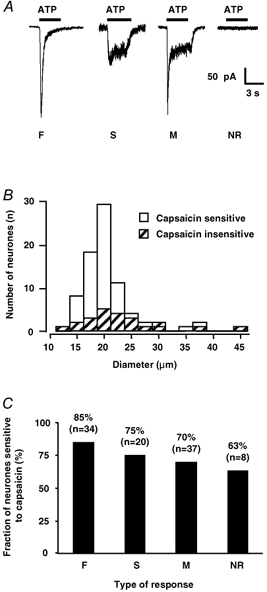Figure 1. Diversity of P2X receptor-mediated membrane currents and their relationship to somatic cell diameter and capsaicin sensitivity in neonatal DRG neurones.

A, local application of ATP (1 μM) over 3 s (horizontal black bars), induced three types of membrane currents. F-type currents were characterized by a fast activation and complete desensitization whereas S-type currents were only slowly desensitizing. M-type currents reflected a mixed F and S phenotype. Finally, some neurones did not respond to ATP at the concentration tested and were termed NR for ‘non-responding’. All recordings were made at a holding potential (Vh) of −70 mV. B, histogram showing the distribution of capsaicin-sensitive (open bars, n = 76) and capsaicin-insensitive neurones (hatched bars, n = 24) as a function of their somatic diameter. Bin width: 2.5 μm. C, bar graph showing the percentage of neurones sensitive to capsaicin as a function of the type of ATP response recorded. Note that neurones displaying F-type responses had a greater tendency to include a larger proportion of capsaicin-sensitive cells than neurones which did not respond to ATP. However, statistical analysis (χ2 test) showed that there was no correlation between the type of ATP response and the presence of a response to capsaicin.
